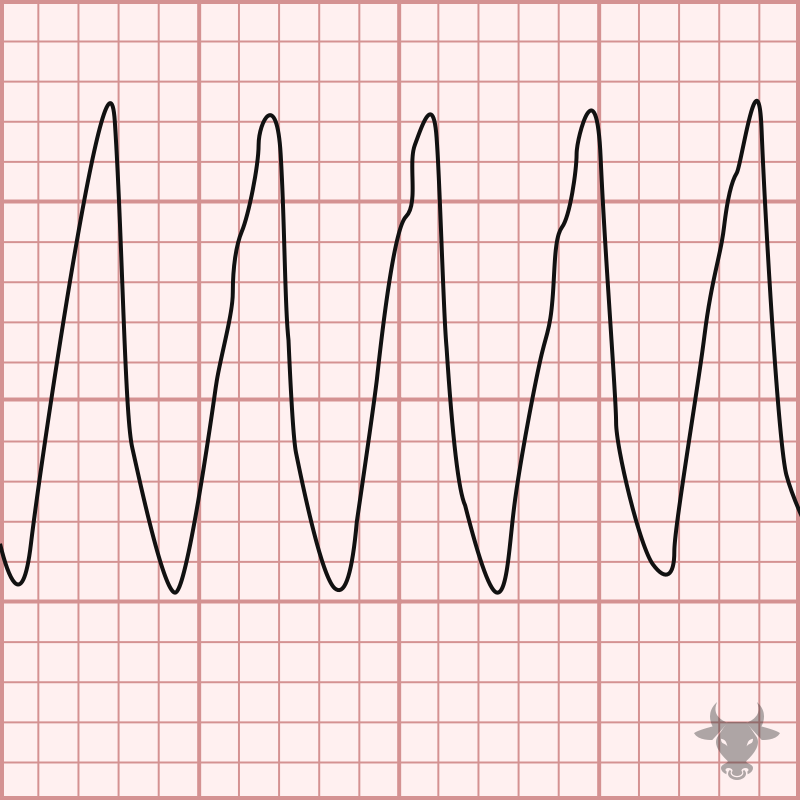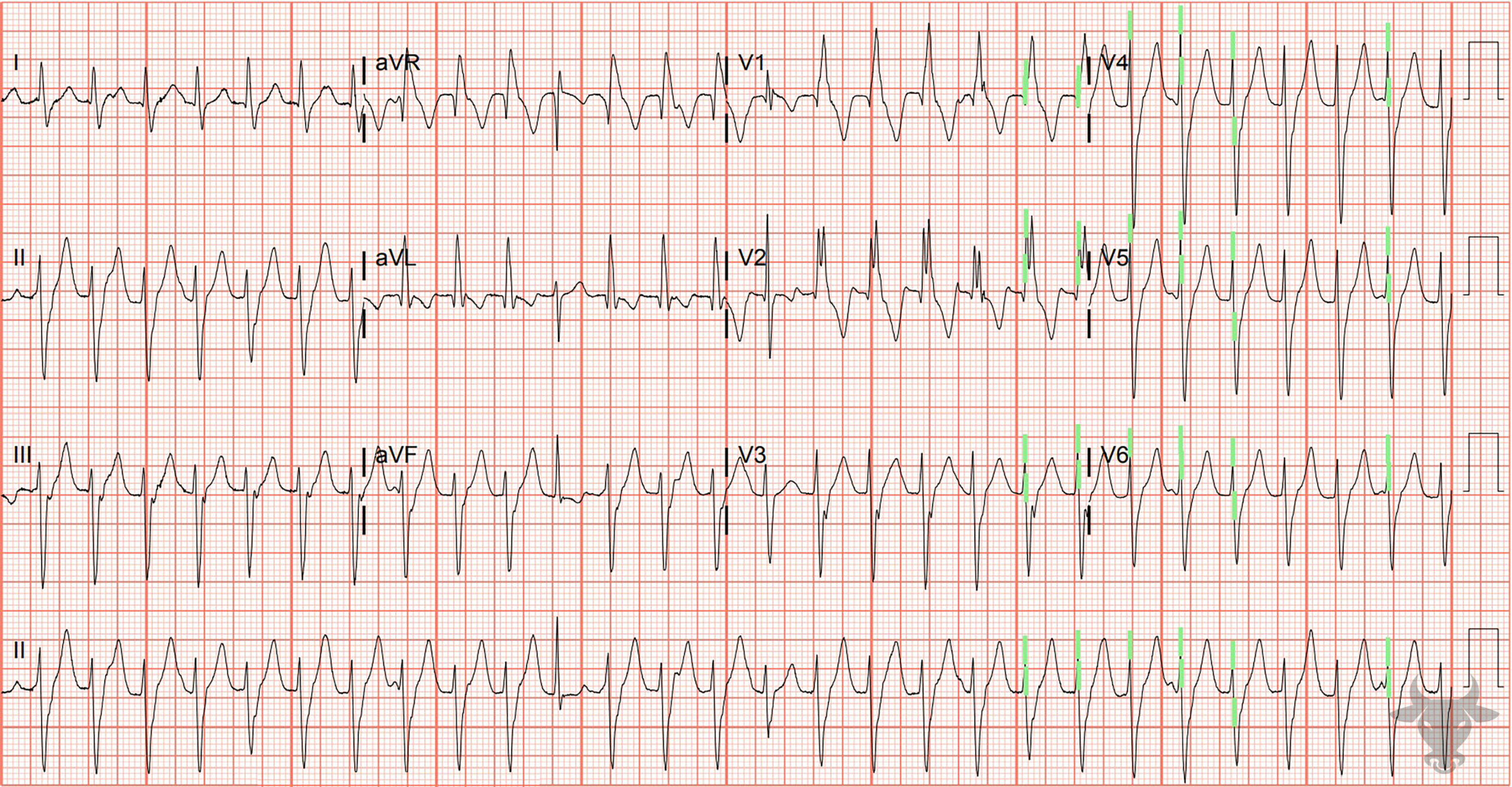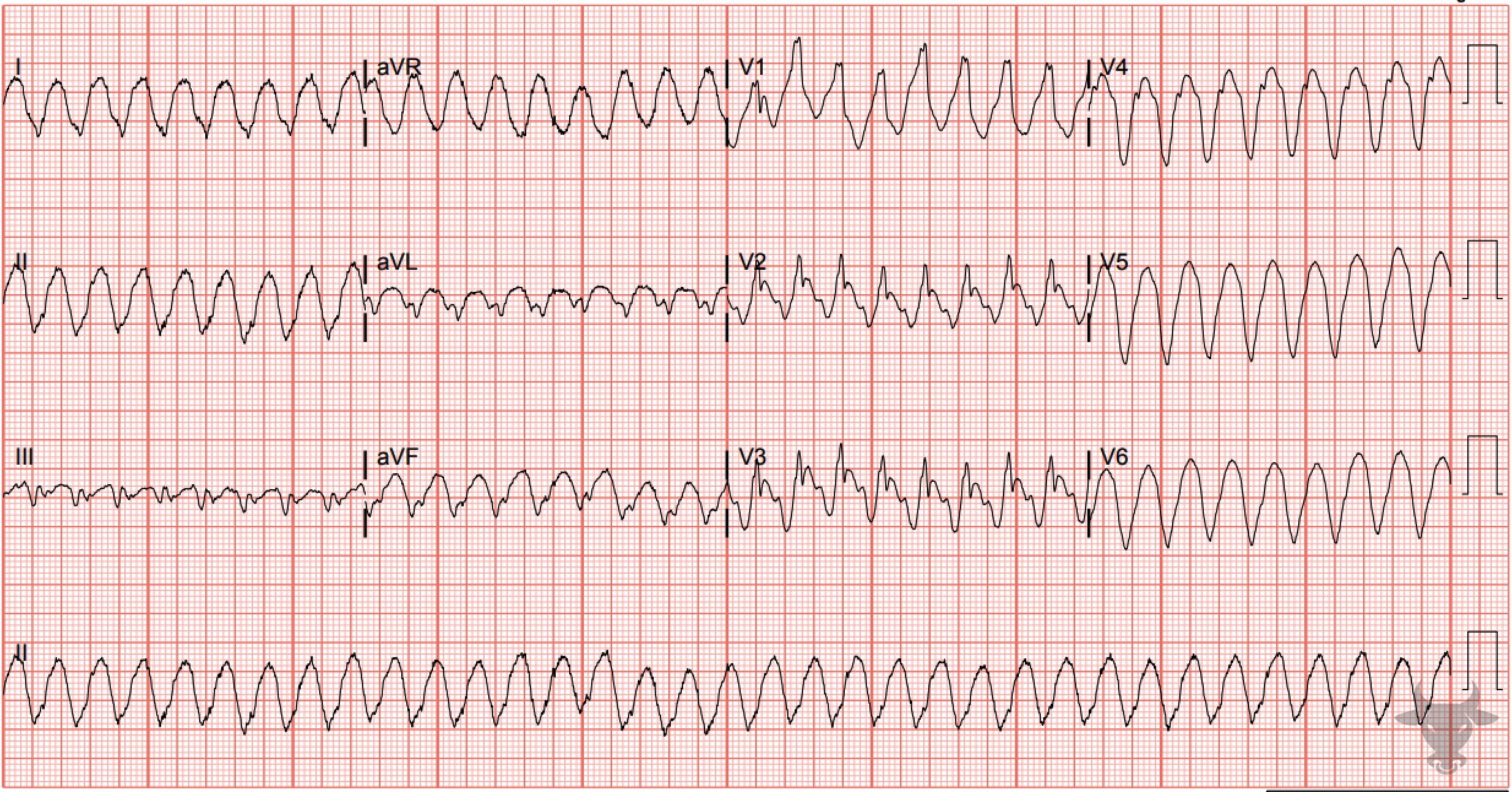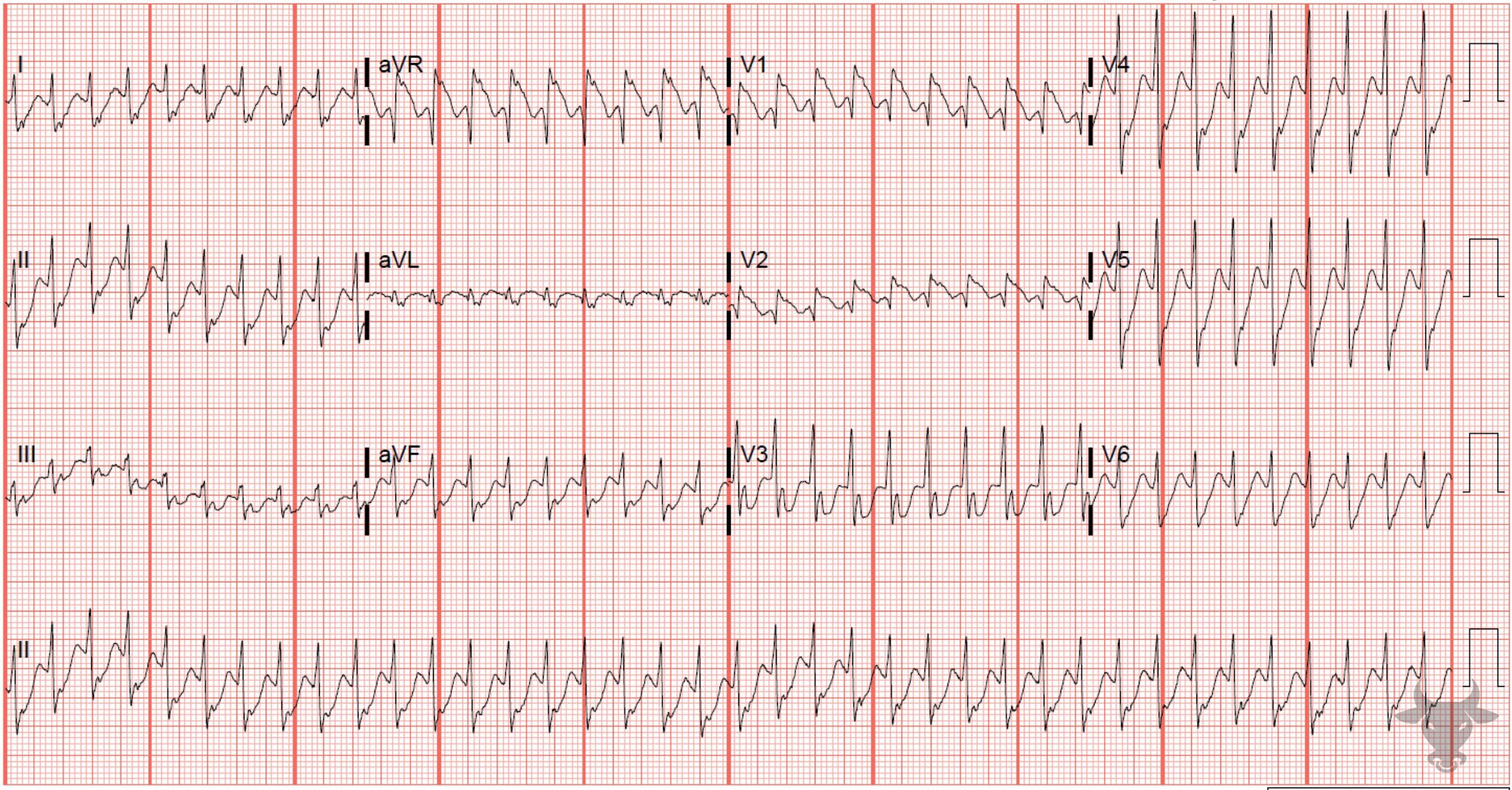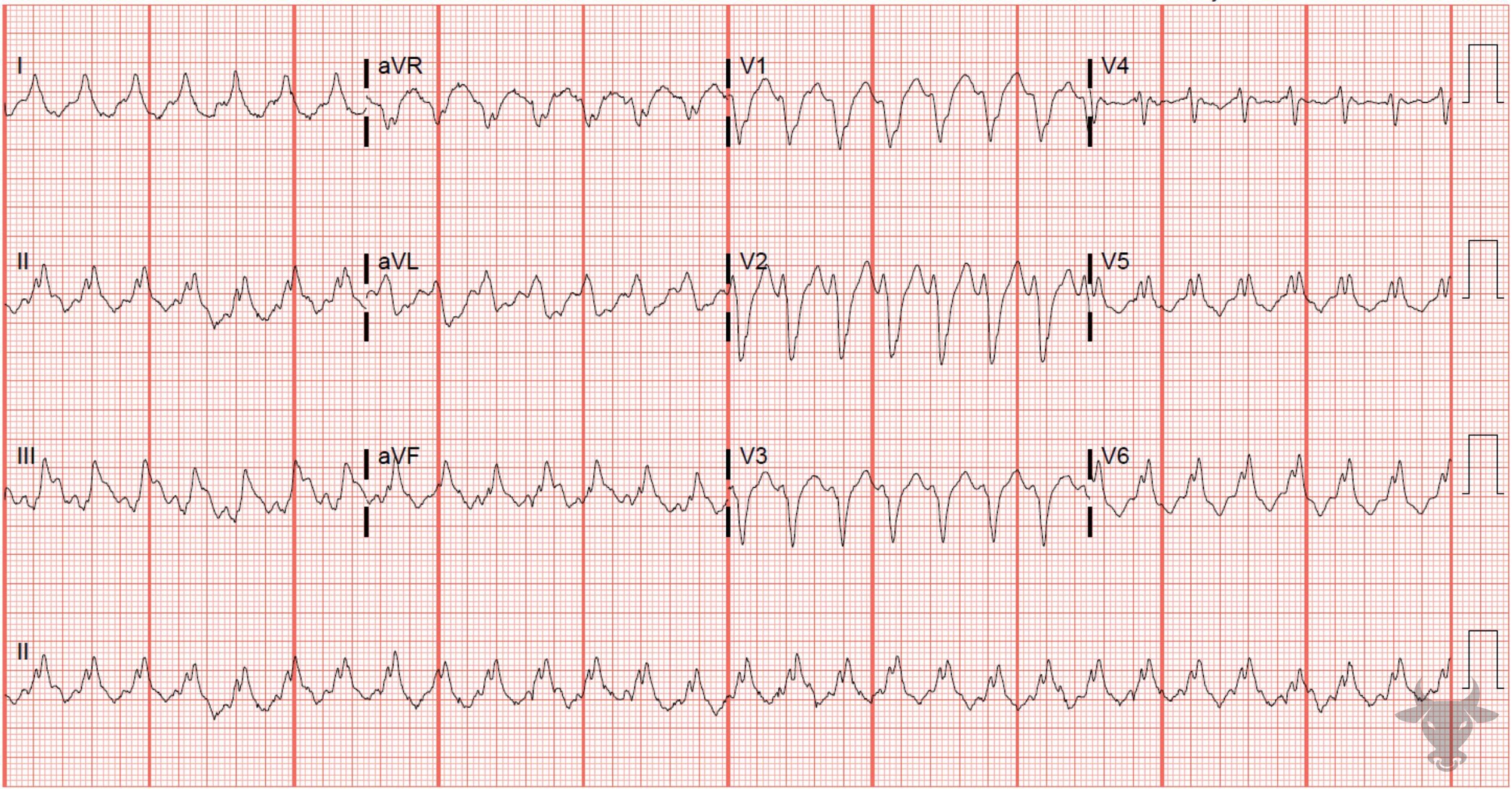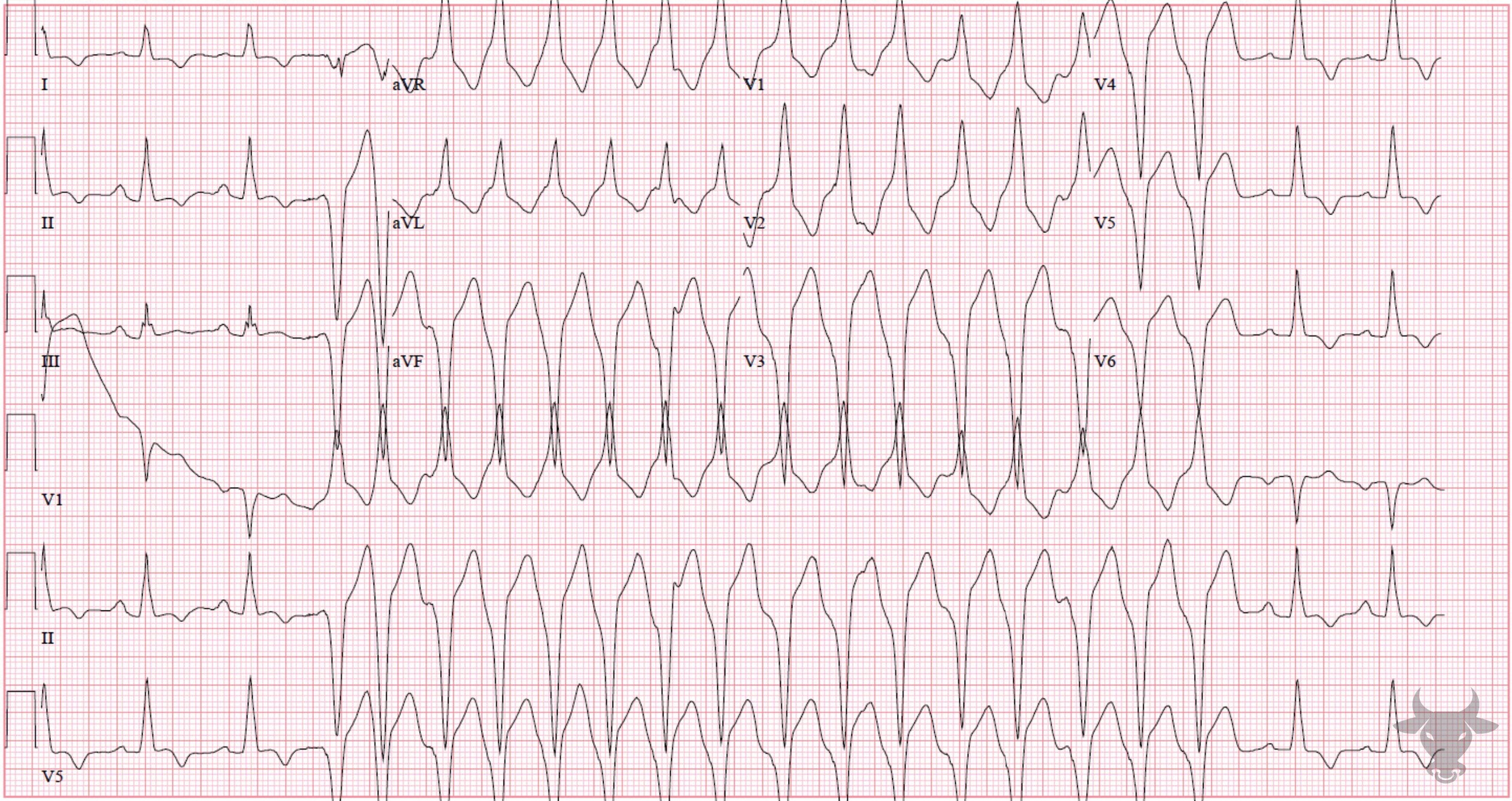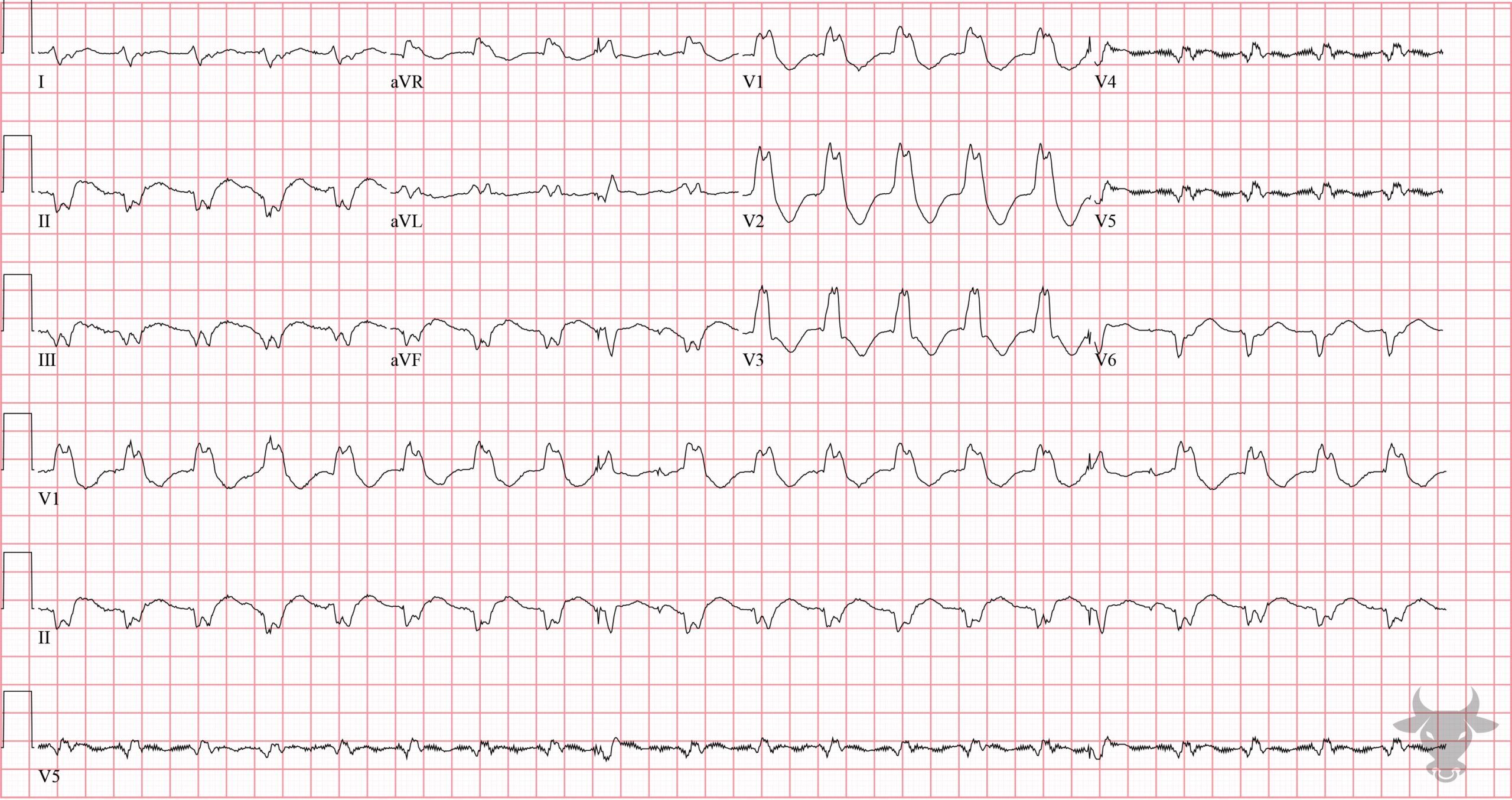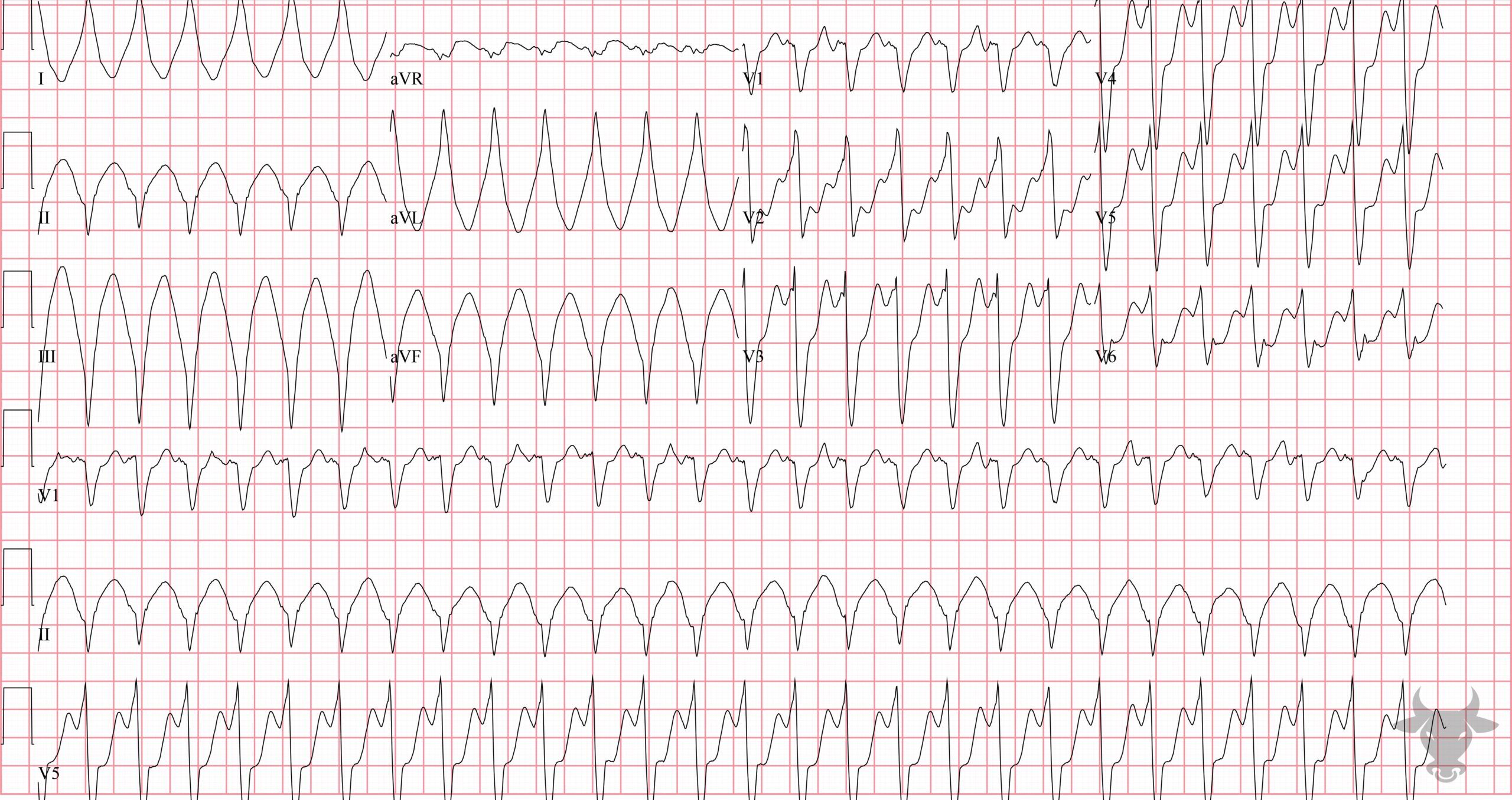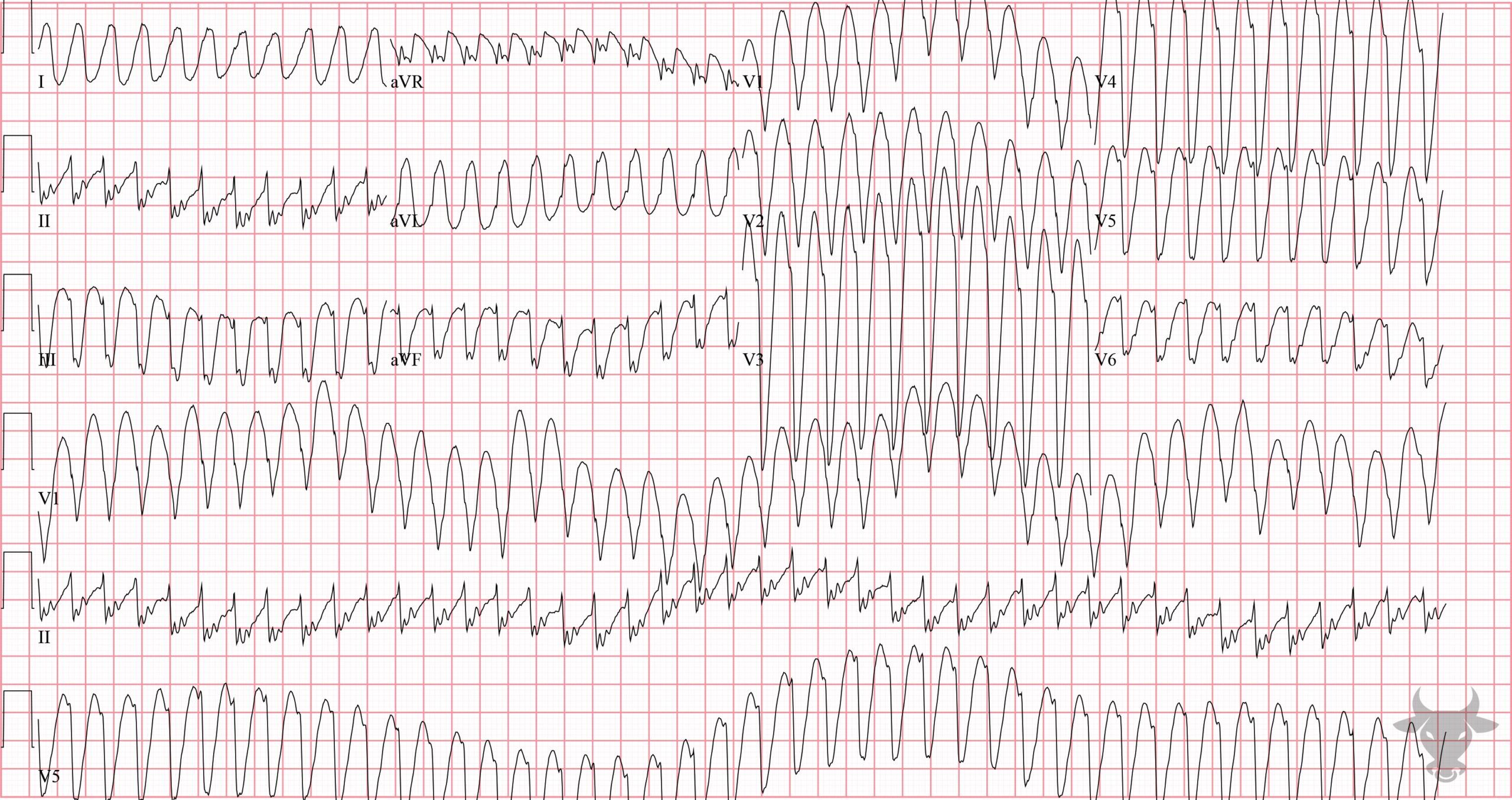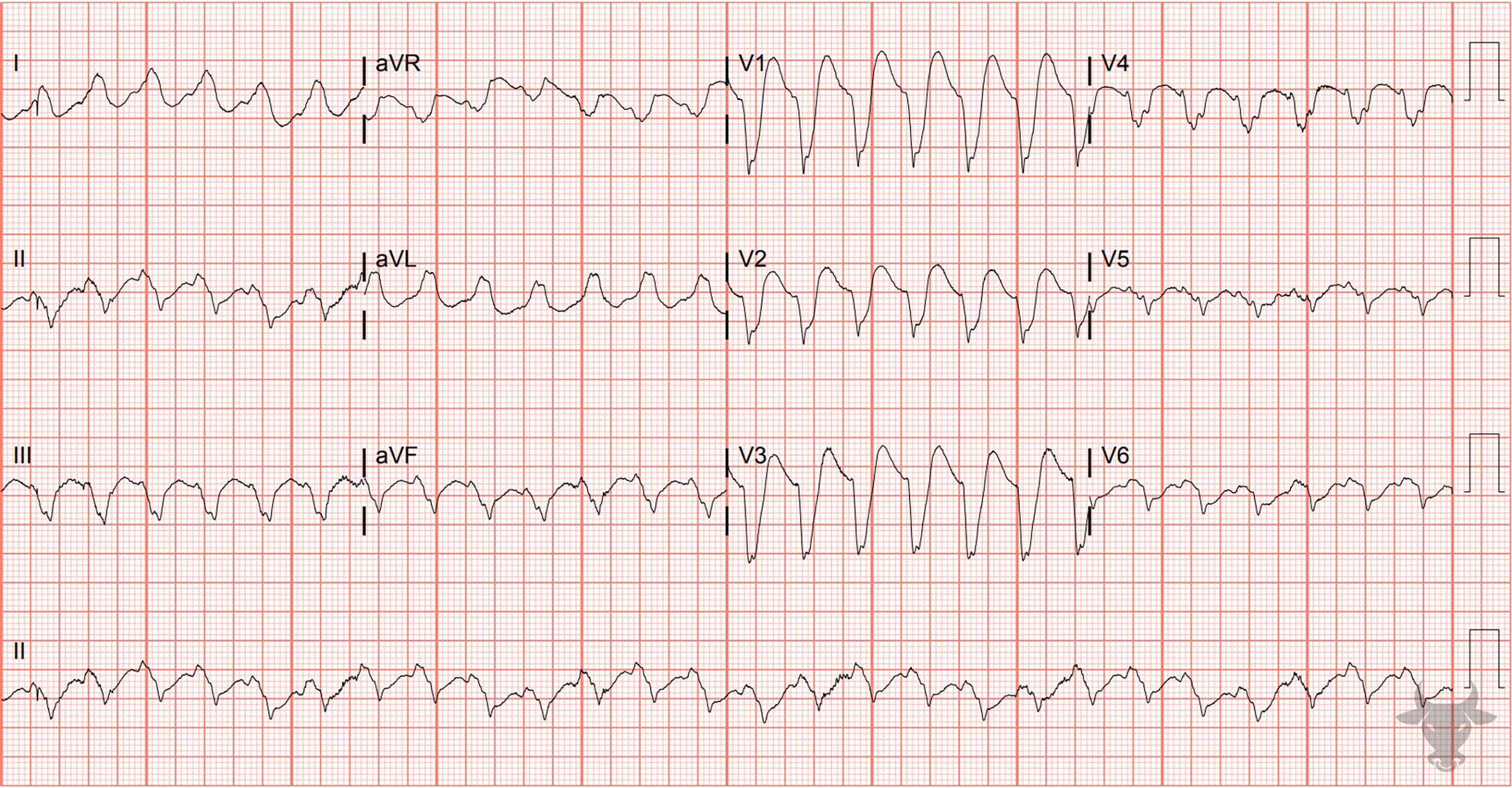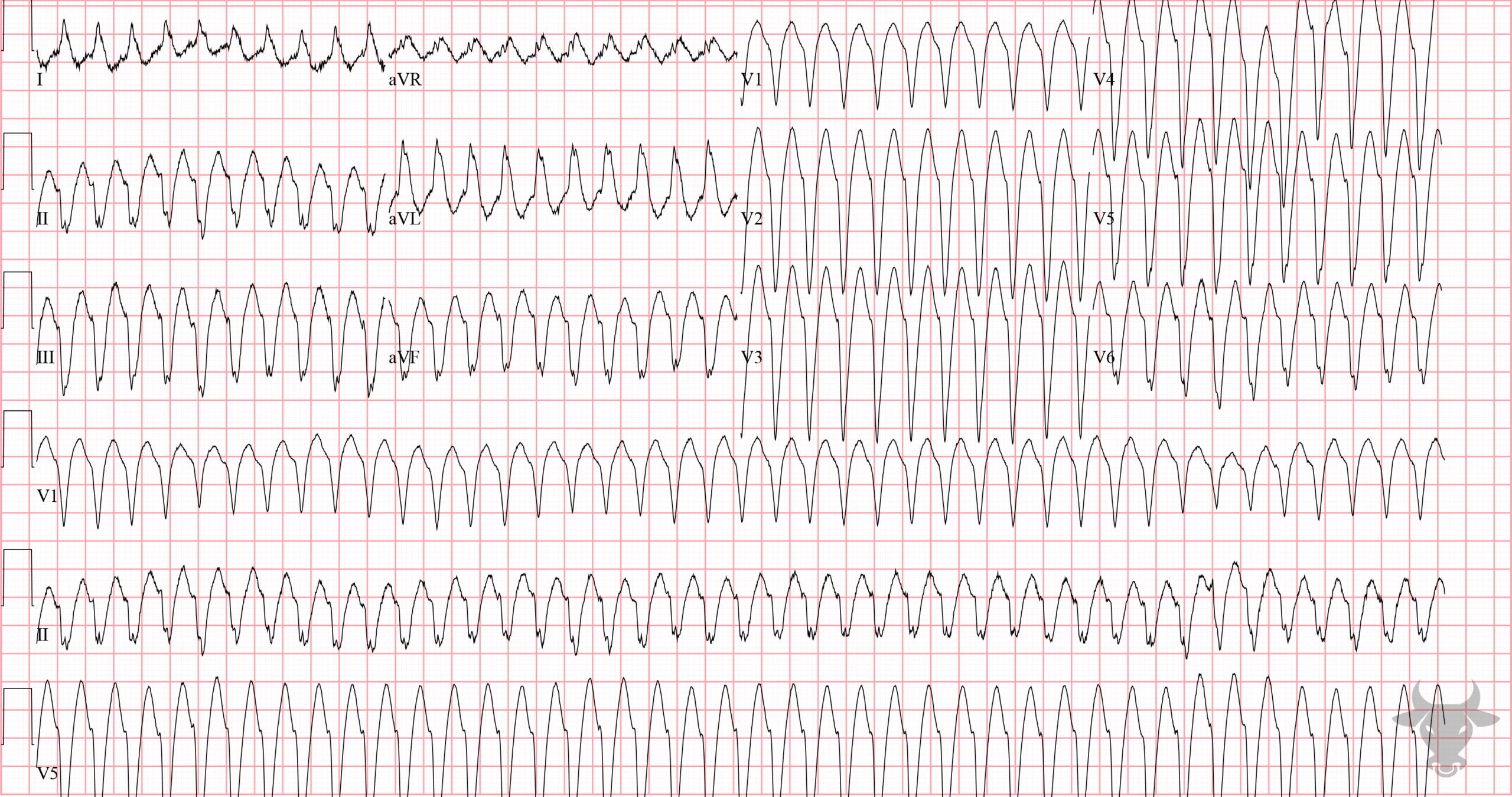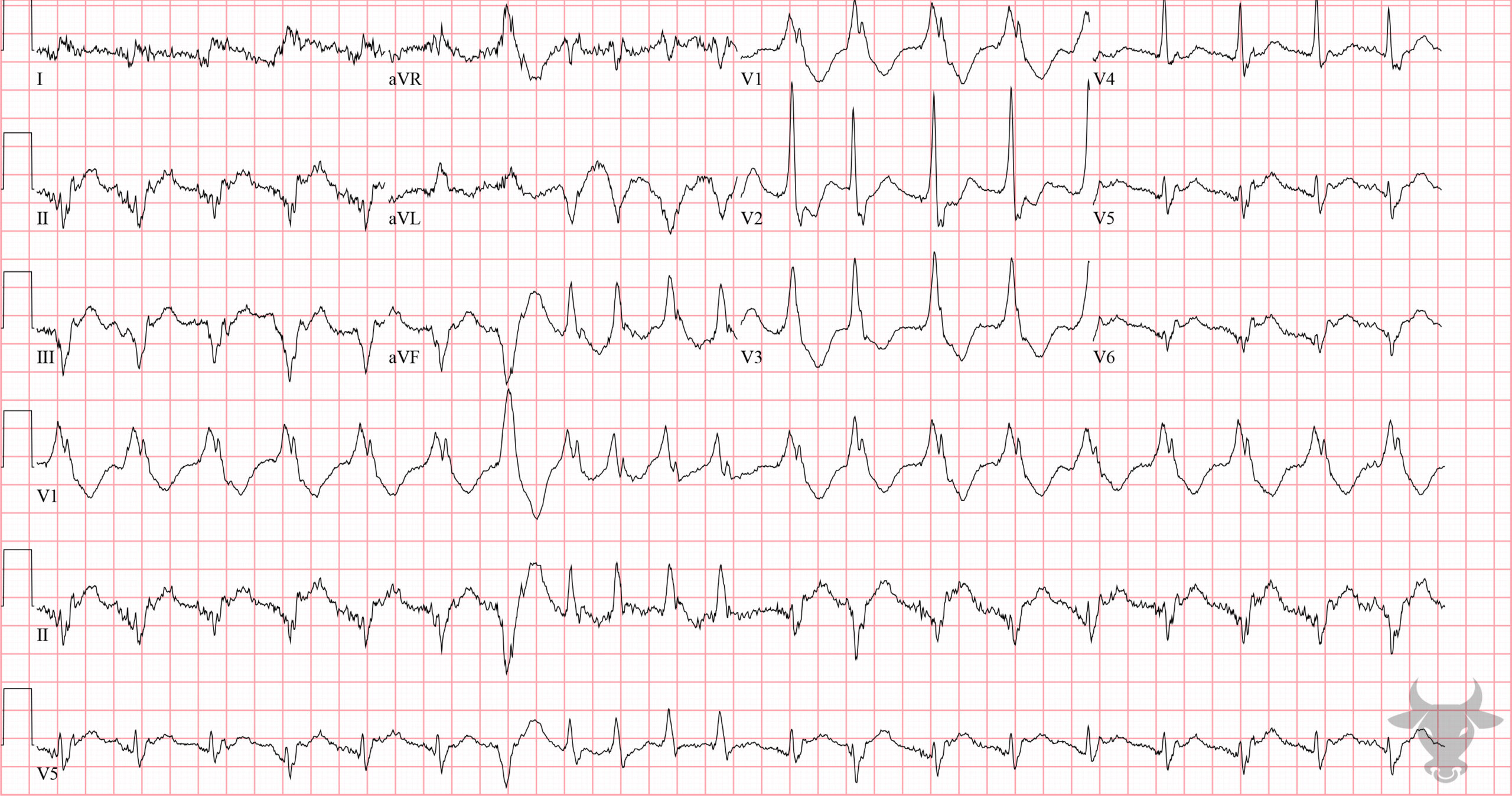Ventricular tachycardia (VT) can be difficult to differentiate from supraventricular tachycardia with aberrancy. When in doubt, it is safest to treat most wide complex tachycardia as VT. Up to 80% of cases of all WCT are ventricular tachycardia, and none of the available algorithms perform well in the acute setting. One should be cautious of treating potential VT with atrioventricular nodal blockers (as one would for SVT).
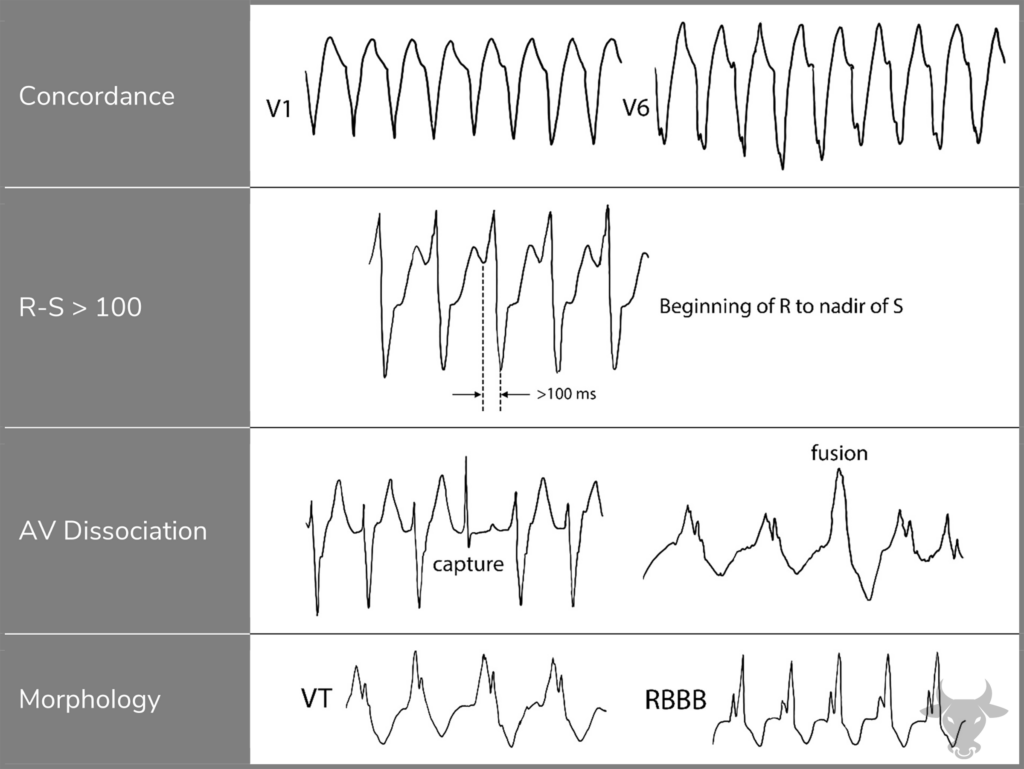
These features are adapted from the Brugada algorithm, which is one of several algorithms to help differentiate between supraventricular tachycardia with aberrancy and ventricular tachycardia. If any condition is met, ventricular tachycardia is diagnosed. Concordance describes QRS complexes in the same direction (up or down) across the precordium (V1 – V6). Signs of AV dissociation include capture beats, fusion beats, or occasionally P waves can be visualized. If the previous three criteria are not met and the morphology suggests aberrancy, then ventricular tachycardia is unlikely. Rsr’ appearance (as opposed to rsR’) in V1 strongly favors ventricular tachycardia. AV, atrioventricular.

